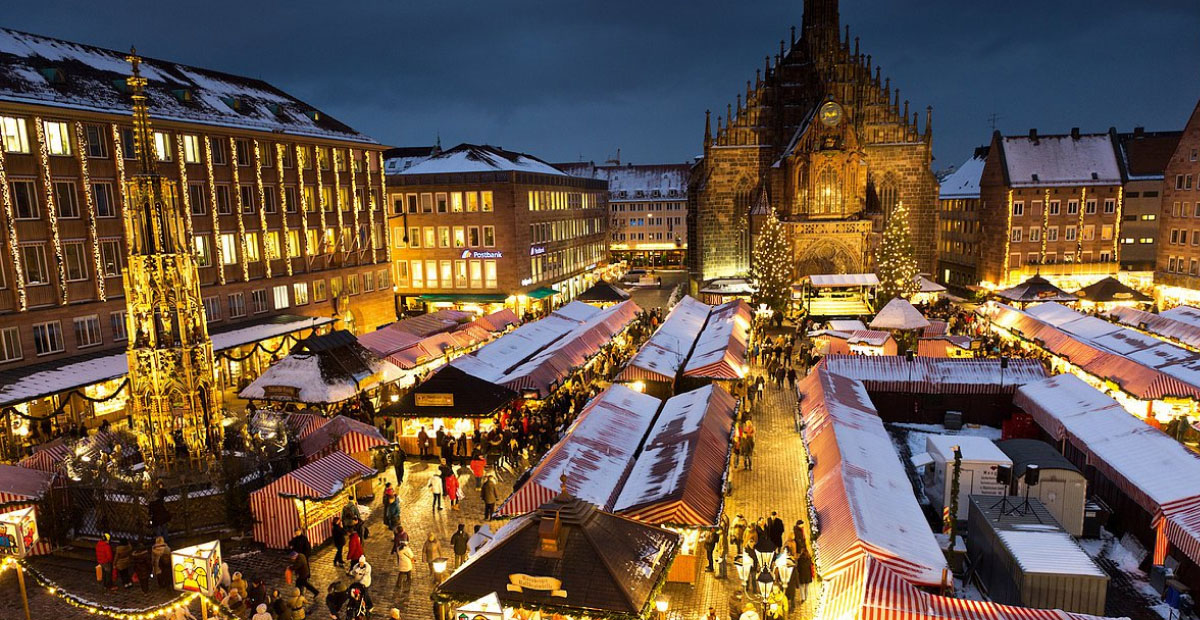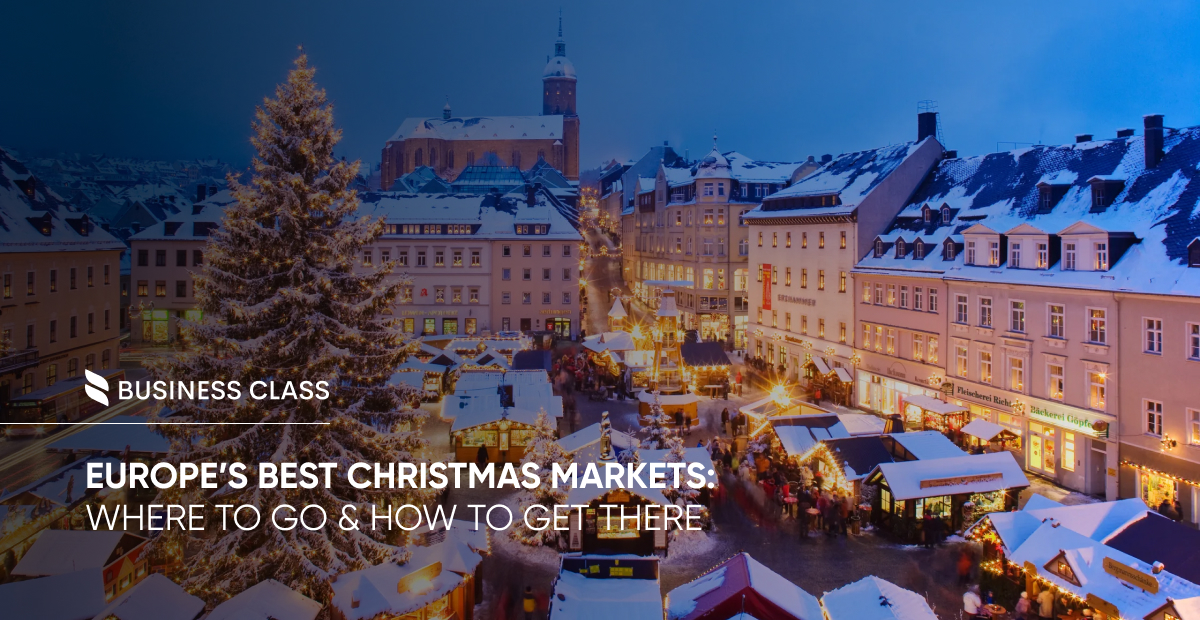Experience the magic of Europe’s Christmas markets by embracing traditions older than any modern display. Instead of settling for staged, synthetic holiday decorations, venture into a world where centuries-old customs continue to warm hearts throughout the coldest months. Europe’s oldest winter fairs are alive with quiet authenticity, layered stories, and a timeless holiday spirit.
Why Visit Europe’s Christmas Markets?
Centuries-Old Traditions:
Arriving in Nuremberg, it becomes clear that these markets are not modern tourist traps—they are historical survivors. One vendor, a baker named Heike, explained how her family’s spice blend took seventy years to perfect, a recipe passed down through generations with no shortcuts. In the medieval setting, it’s evident that these fairs connect today’s visitors with people from the past, carrying subtle hints of old forests, distant whispers, and well-worn hands through time.

Cultural Authenticity:
From the banks of the Rhine to Krakow’s snowy Main Square, authenticity replaces pre-packaged jingles. Witnessing a spice vendor in Cologne grind fresh nutmeg or savoring a pastry in Vienna crafted from a recipe measured in “handfuls” rather than by scale reveals that cherished traditions persist. This timeless quality demonstrates the resilience and meaningful heritage found at each market.
Fairy-Tale Ambiance:
Stepping into these markets feels like entering a living storybook. Half-timbered houses in Strasbourg seem to lean in to listen; Krakow’s twinkling bulbs shimmer beneath lofty spires; and centuries-old imperial grandeur in Vienna reflects in puddles along cobblestone paths. Choirs, carved ornaments, smoky cheeses, and old-fashioned gingerbread blend together, creating an unforgettable holiday experience.
Best Christmas Markets in Europe
Nuremberg, Germany:
Open the old door to Nuremberg’s Christmas market, a place holding tight to its hundred-year promises. Since 1628, this market has refused to sell cheap, factory-made things. Instead, everything speaks of human skill—painted ornaments with rich colors, carved wooden angels dreamed up by craftspeople long ago, each piece carrying skills passed down through families. The old trade groups once protected their work, making sure only handmade items filled the market. Stand under the old church, watch the Christmas angel appear like a glowing character from an old story, then taste gingerbread warm enough to heat cold fingers. Each bite, each carved face, each old song tells the story of people who shaped this place with their own hands.

Cologne, Germany:
Wrap yourself in a scarf and wander Cologne’s holiday markets, spread out like a giant blanket over old streets. One corner tells stories of rivers and trade, another sits near the massive cathedral. This city has always been a crossroads, with goods and people bringing different sounds and tastes from far away. Drink something hot, eat bread with cheese, and taste how old trade routes still live in every flavor. Nothing here stands alone—everything has touched something from somewhere else, leaving the city rich with mixed voices.

Vienna, Austria:
Walk through Vienna’s twinkling lights near grand old buildings and stone statues. The spirit of an old empire still hangs in the air, filling the market with pastries fit for kings and queens. Crafts float around like memories from fancy halls. Bite into a pastry filled with fresh apples, listen to choir music, and remember how royalty once enjoyed these same tastes and sounds that still dance through the city.

Krakow, Poland:
Step into Krakow’s market square, surrounded by stalls showing tiny models of buildings and nativity scenes. Long ago, these small displays kept hope alive during hard times when borders changed and outside rulers tried to control the city. Each tiny tower and wooden figure shows the spirit of a place that never forgot who it was. Eat strong mountain cheese, enjoy soft dumplings that might have comforted workers on cold mornings. This market proves that even small places can hold great courage.

Strasbourg, France:
Welcome to Strasbourg, the first of these holiday markets. Long before others started, this city was bringing people together. Sitting between France and Germany, the market mixes two cultures—French delicacy and German tradition. Cookies here tell stories of people from different sides coming together. Each market stall shows how old fights can turn into sweet moments and beautiful crafts. Smell the warm butter, taste a cookie, and feel how borders can melt away.

Additional Tips for a Magical Christmas Market Experience
Beyond Shopping: Market Magic
These markets offer more than just holiday shopping—they’re living stages of cultural heritage. Watch local artisans demonstrate centuries-old crafts: woodcarvers in Nuremberg shaping intricate ornaments, glassblowers in Cologne creating delicate decorations, and pastry makers in Vienna revealing recipes passed through generations.
A Taste of Tradition
Each market tells a story through its food and drink. In Nuremberg, try the famous small spiced sausages that reflect centuries of culinary tradition. Cologne offers Halver Hahn—a simple rye bread that speaks of local comfort. Vienna’s pastries whisper tales of imperial kitchens, while Krakow’s pierogi carry the warmth of family gatherings. The drinks are equally meaningful. Glühwein is more than a warm beverage—it’s liquid history. Spiced and steaming, it connects modern visitors to winter traditions older than any living memory. Each region offers its own version: Vienna’s rum-laced punch, Nuremberg’s gentle kinderpunsch for children, and Krakow’s honey-rich warmth.
Supporting Local Traditions
These markets do more than sell souvenirs—they preserve culture. Most vendors are local artisans whose crafts represent generations of skill. Strict market rules ensure that 80% of items are handmade locally, supporting family businesses that have existed for decades. Environmentally, these markets lead by example. Reusable mug systems reduce waste, locally sourced materials support regional economies, and handmade items replace mass-produced souvenirs.

Connecting Through Culture
A simple “Frohe Weihnachten!” or an attempt to learn local customs can unlock deeper experiences. Markets offer more than shopping—they’re opportunities to connect, to listen, to understand how traditions survive and thrive.
Conclusion
Europe’s winter fairs are more than festive gatherings; they are living relics of history, culture, and resilience. Each bite, each crafted ornament, and each melody carries a story waiting to be discovered. So wrap up warm, dive into the traditions, and carry home a piece of the old soul these markets offer.
Rather than viewing the journey as a chore, consider it a preview of the holiday mood. Many airlines add festive touches this time of year—a special dessert, a hint of spice in the cabin menu. If you’ve ever been curious about flying in business class, the holiday season is the perfect time to try it out. Arrive well-rested, comfortable, and already wrapped in a bit of seasonal cheer.




